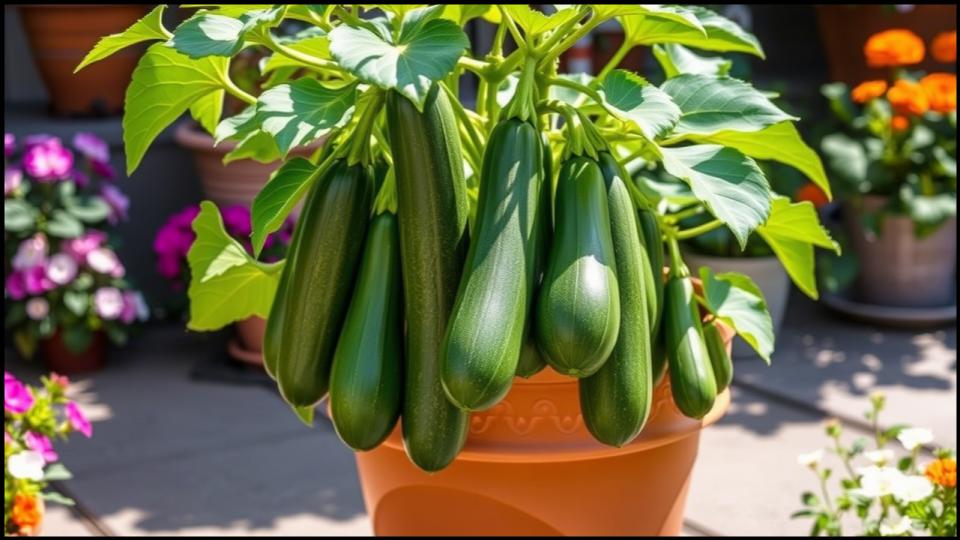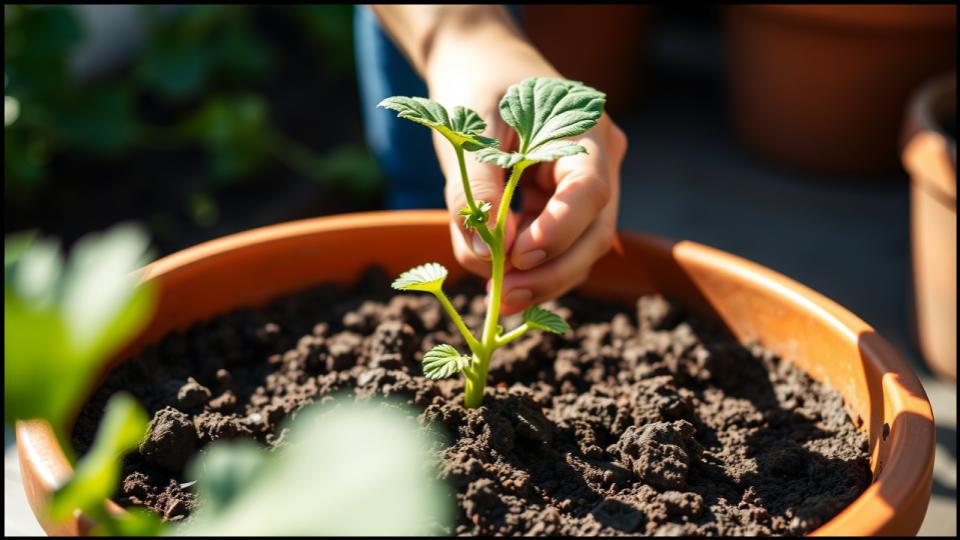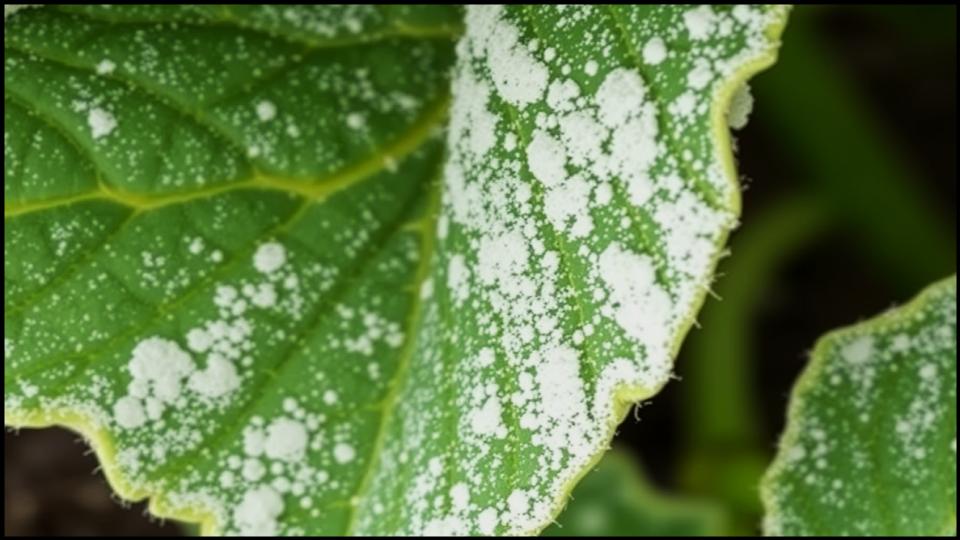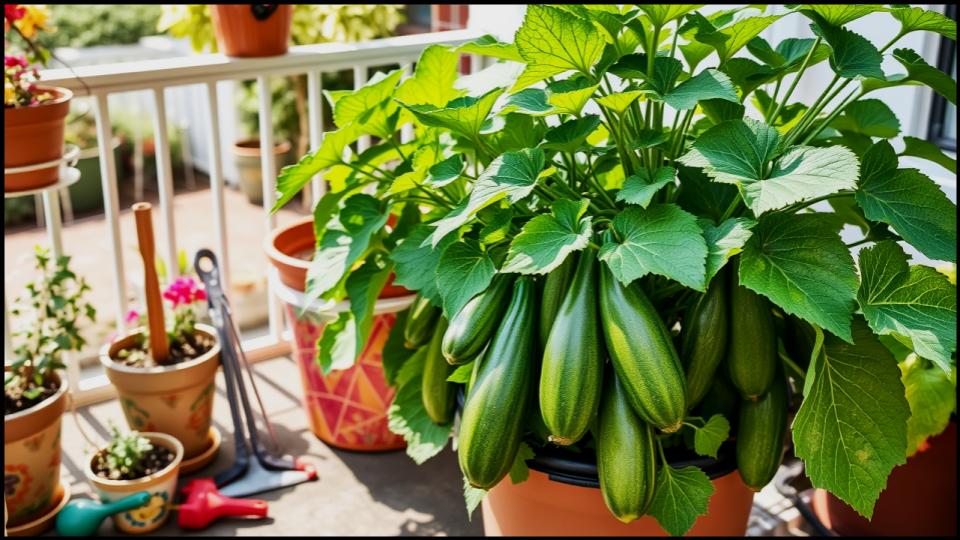
The allure of stepping outside to snip a fresh zucchini for your evening meal is undeniable. Imagine its firm, glossy skin and the promise of delicate flavor – all nurtured by your own hand, right in your outdoor living space. Many gardeners believe these sprawling plants are reserved for large plots, but I’m here to tell you that growing zucchini in containers is not only entirely achievable but also remarkably chic and productive. This guide will walk you through every step, transforming your patio or balcony into a source of delicious, homegrown goodness. Get ready to discover the simple joy and profound satisfaction of cultivating your own summer squash, no vast garden required.
Key Takeaways
Here’s what you need to know for thriving container zucchini:
- Go Big on Pots: Zucchini need room. Choose containers at least 5 gallons (12-15 inches in diameter) per plant, though I always say bigger is better, aiming for 10-15 gallons if space allows.
- Sun is Paramount: Select a spot that receives at least 6-8 hours of direct sunlight daily.
- Choose Compact Varieties: Opt for bush or compact zucchini types specifically bred for smaller spaces.
- Consistent Watering is Key: Container plants dry out faster; check soil moisture daily.
- Feed Regularly: Zucchinis are hungry plants. A regular feeding schedule will ensure a bountiful harvest.
Why Choose Container Zucchini? The Beauty of Potted Abundance
The decision to embrace growing zucchini in containers opens up a world of possibilities for gardeners with limited space, or for those who simply appreciate the versatility and control that container gardening offers. You can transform a sun-drenched balcony, a petite patio, or even a well-lit stoop into a productive mini-garden. One of the primary benefits, in my experience, is the ability to provide optimal soil conditions from the get-go, something that can be a real challenge in traditional garden beds with compacted or nutrient-poor earth.
Furthermore, containers elevate your plants, quite literally, making them less susceptible to certain ground-dwelling pests and soil-borne diseases. This elevation also means easier access for care and harvesting – a blessing for those who prefer not to spend too much time kneeling. And let’s not forget the aesthetic appeal! A well-chosen pot brimming with lush zucchini leaves and vibrant yellow blossoms can be a stunning focal point, adding a touch of edible elegance to your outdoor décor. I often advise clients that strategically placed container vegetables can be just as beautiful as ornamental plantings.
Selecting the Perfect Pot for Growing Zucchini in Containers
The foundation of successful container gardening lies in choosing the right vessel. For zucchini, this is particularly crucial due to their vigorous root systems and eventual size, even for more compact varieties.
Think generous – a minimum of 5 gallons is often cited, which translates to a pot roughly 12-14 inches in diameter and depth. However, if you have the space and can manage a larger pot, something in the 10-15 gallon range (16-20 inches in diameter) will provide a more stable environment for your plant, retain moisture better, and ultimately support more robust growth. In my own container experiments, the zucchini in larger pots invariably outperform their counterparts in smaller ones.
Drainage is non-negotiable. Ensure your chosen container has ample drainage holes at the bottom. Zucchini, like most plants, despise “wet feet,” which can lead to root rot – a common ailment I see when drainage is overlooked. If a decorative pot lacks holes, you can often drill them yourself or use it as a cachepot, placing a functional nursery pot with drainage inside.
Material matters too, both for aesthetics and practicality:
- Terracotta: Classic and breathable, allowing for good air exchange to the roots. However, it dries out quickly in hot weather, demanding more frequent watering.
- Glazed Ceramic: Offers beautiful designs and retains moisture better than terracotta. Ensure it has drainage holes, as these can sometimes be just decorative.
- Plastic or Resin: Lightweight, affordable, and excellent at retaining moisture. Opt for thicker, UV-resistant types to prevent cracking over time.
- Fabric Grow Bags: An excellent option, providing superior aeration and drainage, which encourages healthier root systems through “air pruning.” While perhaps less formal, their functionality is superb.

Choosing the Best Zucchini Varieties for Pots
Not all zucchini are created equal when it comes to container life. While traditional vining types can quickly overwhelm a patio, plant breeders have gifted us with wonderful compact, bush-type varieties that are perfectly suited for pots.
Bush vs. Vining Types
Traditional zucchini plants are often “vining,” meaning they send out long runners that can spread several feet in every direction. These are fantastic for large garden beds but challenging for containers. Bush varieties, on the other hand, have a more upright, compact growth habit, producing fruit closer to the center of the plant. This makes them ideal for growing zucchini in containers. Always check the plant tag or seed packet for information on growth habit. My personal preference for containers leans heavily towards these tidy growers.
Recommended Compact Varieties
Look for varieties described as “bush,” “compact,” “patio,” or “container-friendly.” Here are a few excellent choices known for their performance in pots:
- Cucurbita pepo ‘Astia’: A French variety known for its compact, open habit making harvesting easier, and good productivity.
- Cucurbita pepo ‘Black Beauty’: A classic, reliable producer with dark green fruits. While it can get large, it’s manageable in a big enough pot.
- Cucurbita pepo ‘Cue Ball’ or ‘Eight Ball’: These produce charming round zucchinis and tend to have a more contained growth habit.
- Cucurbita pepo ‘Patio Star’: Specifically developed for small spaces and containers, offering good yields on a compact plant.
- Cucurbita pepo ‘Bush Baby’: Another variety bred for its smaller plant size, producing slightly smaller, tender fruits.
When selecting seeds or starts, I always recommend reading descriptions carefully. Reputable seed companies like [Johnny’s Selected Seeds] or [Burpee] often provide detailed information on growth habit and suitability for containers.
The Ideal Soil and Sunshine Setup
With your pot and variety chosen, the next steps are creating the perfect growing medium and finding that sweet spot of sunshine.
Crafting the Perfect Potting Mix
Garden soil from your yard is a no-go for containers; it’s too dense, can harbor diseases, and doesn’t drain properly in a confined space. You need a high-quality, well-draining potting mix. You can purchase bagged potting mixes, or, if you’re feeling ambitious, create your own.
A good potting mix for zucchini should be:
- Light and Fluffy: To allow for root growth and aeration.
- Moisture-Retentive: Yet well-draining to prevent waterlogging.
- Nutrient-Rich: To support these hungry feeders.
A basic DIY potting mix recipe I often use combines:
- 1 part peat moss or coco coir (for moisture retention)
- 1 part perlite or vermiculite (for aeration and drainage)
- 1 part compost or well-aged manure (for nutrients)
Mix these components thoroughly. Before filling your container, you might consider adding a slow-release granular fertilizer to give your plants a strong start, following package instructions. Some gardeners add a layer of gravel at the bottom of pots, but according to the University of Illinois Extension, this can actually impede drainage by creating a perched water table. It’s better to ensure good drainage holes and use a quality potting mix throughout.
Sun Exposure: The Zucchini’s Best Friend
Zucchini are sun worshippers. They require a minimum of 6-8 hours of direct sunlight per day to thrive and produce abundantly. An ideal location would be a south-facing patio or an open area that isn’t shaded by buildings or trees during the sunniest parts of the day. If you’re unsure about sunlight patterns, I suggest observing your chosen spot for a full day before committing. Less sun typically means fewer fruits and a leggier plant.
Planting Your Zucchini: A Step-by-Step Guide
Whether you’re starting with seeds or young plants, proper planting is key to getting your container zucchini off to a great start.
Starting from Seed
Zucchini seeds are large and germinate relatively easily, making them satisfying to start yourself.
- Timing: Sow seeds directly into their final container about 2 weeks after your average last frost date, when the soil has warmed. Alternatively, you can start them indoors 2-3 weeks before your last frost date in smaller pots and transplant them later.
- Sowing: Plant 2-3 seeds about 1 inch deep in the center of your prepared container. Planting a few ensures at least one strong seedling emerges.
- Watering: Water gently but thoroughly after planting. Keep the soil consistently moist but not waterlogged.
- Germination: Seeds should sprout within 7-14 days, depending on soil temperature.
- Thinning: Once seedlings have a couple of true leaves, select the strongest one and snip the others off at soil level. Avoid pulling, as this can disturb the roots of the remaining seedling. It’s a tough choice, I know, but vital for the health of your main plant.
Transplanting Seedlings
If you’ve purchased nursery starts or started your own indoors:
- Hardening Off: Acclimatize your seedlings to outdoor conditions for about a week before transplanting. Gradually increase their exposure to sun and wind. This is a step I never skip; it significantly reduces transplant shock.
- Planting: Dig a hole in your container’s potting mix that is as deep and wide as the seedling’s root ball.
- Handling: Gently remove the seedling from its original pot, disturbing the roots as little as possible.
- Positioning: Place the seedling in the hole so that the top of its root ball is level with the surface of the potting mix in the new container.
- Backfilling: Fill in around the root ball with potting mix, gently firming the soil.
- Watering: Water thoroughly to settle the soil and hydrate the roots.

Essential Container Zucchini Care for a Bountiful Harvest
Once planted, your zucchini will rely on you for consistent care to ensure they grow strong and produce prolifically. This is where container zucchini care truly comes into its own.
Watering Wisdom
Consistent moisture is vital for zucchini, especially in containers, which dry out much faster than garden beds.
- Check Daily: In the heat of summer, you may need to water daily, or even twice a day for smaller pots. Insert your finger about an inch or two into the soil; if it feels dry, it’s time to water.
- Water Deeply: When you do water, do so thoroughly until water drains from the bottom of the pot. This encourages deep root growth.
- Morning Watering: Watering in the morning is generally best, as it allows foliage to dry before evening, reducing the risk of fungal diseases. Avoid wetting the leaves if possible; water at the base of the plant. I often use a watering wand for precise application.
Feeding Your Hungry Zucchini
Zucchinis are heavy feeders. The nutrients in your initial potting mix will get them started, but regular fertilization is necessary for sustained growth and fruit production.
- Balanced Liquid Fertilizer: Once the plant begins to flower, start feeding every 2-3 weeks with a balanced, water-soluble fertilizer (e.g., 10-10-10 or 20-20-20). Follow the product label for dilution rates.
- Organic Options: Fish emulsion or liquid seaweed fertilizer are excellent organic alternatives. You can also top-dress with compost mid-season.
- Avoid Over-Fertilizing: Too much nitrogen can result in lush foliage but few flowers or fruit. If this happens, switch to a fertilizer higher in phosphorus and potassium (the last two numbers on the N-P-K ratio).
The Importance of Pollination
Zucchini plants produce separate male and female flowers. Male flowers typically appear first, on longer, thinner stems. Female flowers have a tiny, immature fruit at their base. Pollen needs to be transferred from the male stamen to the female stigma for fruit to develop.
Outdoors, bees and other insects usually handle pollination. However, in some urban or balcony settings, pollinator activity might be low. If you notice flowers dropping off or tiny fruits shriveling, you may need to hand-pollinate. It’s a simple process:
- Identify a newly opened male flower and a receptive female flower (usually open in the morning).
- Gently remove the petals from the male flower to expose the pollen-laden anther.
- Lightly dab or brush the male anther onto the stigma in the center of the female flower. Alternatively, a small artist’s paintbrush can be used to transfer pollen. I find this early morning ritual quite meditative, connecting me to the subtle workings of the garden.
Supporting Your Plants
Even bush-type zucchinis can benefit from some support as they grow and bear fruit, especially in windy locations.
- Staking: A sturdy stake inserted next to the main stem can provide support. Loosely tie the stem to the stake as it grows.
- Small Cages: A small tomato cage can also work well for more compact varieties, helping to keep leaves and fruit off the soil.
Troubleshooting Common Zucchini Woes in Containers
While generally robust, container-grown zucchini can encounter a few issues. Being vigilant can help you nip problems in the bud.
Pesky Pests
- Squash Vine Borers: These can be devastating. The adult moth lays eggs at the base of the plant, and the larvae bore into the stem. Look for wilting and a small hole with frass (sawdust-like excrement) near the soil line. Prevention is key: wrapping the base of the stem with foil or fabric can help. If you catch them early, you can sometimes slit the stem, remove the borer, and bury the damaged portion of the stem in hopes it will re-root. This is a pest I battle with diligence in my own garden; early detection is crucial.
- Squash Bugs: These gray-to-brown insects suck sap from leaves, causing yellow spots and wilting. Handpick adults and crush egg clusters (usually found on the undersides of leaves).
- Aphids: Small, pear-shaped insects that cluster on new growth and undersides of leaves. A strong spray of water can dislodge them, or use insecticidal soap.

Common Diseases
- Powdery Mildew: This appears as white, powdery spots on leaves and stems, especially when conditions are humid with poor air circulation. Ensure good spacing, water at the base of the plant, and consider a fungicide if severe. Cornell University’s Plant Disease Diagnostic Clinic offers good advice on managing powdery mildew in vegetables. Some resistant varieties are available.
- Blossom End Rot: The end of the fruit turns black and rots. This is usually caused by a calcium deficiency linked to inconsistent watering. Ensure regular, deep watering and maintain consistent soil moisture.
Harvesting Container Zucchini: The Delicious Reward
The moment you’ve been waiting for! Harvesting container zucchini at the right time ensures the best flavor and encourages the plant to keep producing.
When and How to Pick
- Size Matters (Smaller is Better): Zucchini are best picked when they are young and tender. For most long varieties, aim for 6-8 inches in length. Round varieties are typically ready when they are 3-4 inches in diameter. Don’t let them grow into baseball bats! Overly large zucchini can be tough, seedy, and less flavorful. I always say, “When in doubt, pick it.”
- Harvesting Technique: Use a sharp knife or pruning shears to cut the zucchini from the plant, leaving about an inch of stem attached to the fruit. Twisting can damage the plant.
- Check Frequently: During peak season, you might need to harvest every day or two. These plants are incredibly productive!
Encouraging Continuous Production
Regular harvesting is key to a long and abundant yield. When you pick a zucchini, you signal to the plant to produce more flowers and fruit. If fruits are left to mature fully (become very large and hard), the plant may slow or stop producing, thinking its reproductive job is done.
Styling Your Potted Zucchini: Edible Elegance
Who says productive can’t be pretty? Your container zucchini can be a star player in your outdoor décor.
- Choose Stylish Containers: As mentioned earlier, the pot itself is a design element. Select containers that complement your outdoor furniture and overall aesthetic.
- Companion Planting: Consider planting a few trailing herbs like oregano or thyme around the base of the zucchini. They can spill attractively over the pot edge and are handy for the kitchen. Ensure they have similar light and water needs.
- Groupings: Create a stunning edible vignette by grouping your zucchini container with other potted herbs, flowers, or even compact tomatoes. Varying heights and textures adds interest. I love a mix of terracotta, zinc, and perhaps a touch of blue glazed pottery.
- Vertical Interest: Even compact zucchini have large, architectural leaves that add a bold, tropical feel to a patio setting.

TOOLS AND MATERIALS BOX:
- Large Container: Minimum 5-gallon, ideally 10-15 gallon (12-20 inches diameter) with drainage holes.
- High-Quality Potting Mix: Specifically formulated for containers.
- Zucchini Seeds or Seedlings: Choose compact or bush varieties.
- Watering Can or Hose with Wand: For gentle, thorough watering.
- Balanced Liquid Fertilizer: (e.g., 10-10-10 or organic alternative like fish emulsion).
- Trowel: For planting.
- Pruning Shears or Sharp Knife: For harvesting.
- (Optional) Plant Stakes or Small Cage: For support.
- (Optional) Small Paintbrush: For hand-pollination.
A Summer of Flavor Awaits
There you have it – a complete guide to successfully and stylishly growing zucchini in containers. With the right pot, a sunny spot, quality soil, and consistent care, you’re well on your way to enjoying a summer bounty of this versatile squash. Imagine the tender, flavorful zucchini you’ll sauté, grill, bake into bread, or spiralize into “zoodles,” all picked fresh from your own patio harvest.
Don’t be intimidated; embrace the process! Gardening, even on a small scale, connects us to the rhythm of the seasons and offers immense satisfaction. Now you’re ready to transform that sunny corner into a productive and beautiful edible oasis. Happy planting, and may your harvests be plentiful!
